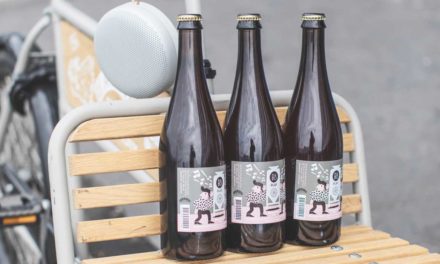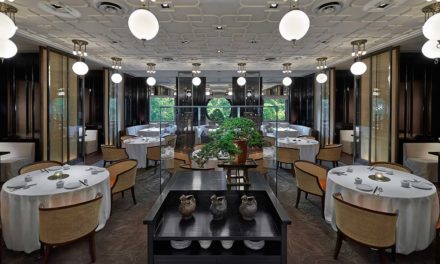If you’re labouring under the belief that Dom Perignon’s creation, champagne, is a luxury product that should only be saved for best, to be opened and consumed solely on high days and holidays, then you might rethink once you know it’s going green.
Yes, champagne is a luxury, but its creators have invested in giving it green credentials, meaning you can imbibe freely, knowing you aren’t just drinking a sustainable drink, but you’re positively affecting climate change. What now?
Champagne’s dirty past
Champagne has a somewhat murky heritage. Up until the early noughties its production wreaked serious havoc on our little green planet. Being such an expensive product to produce meant in order to guarantee a return on investment and meet demand, vintners had to use copious amounts of pesticides and other chemicals on their vineyards to ensure a plentiful and ready supply of grapes.
Not to mention being such a popular product globally that it racks up huge air miles distributing its fizzy fun around the world. With 297 million bottles of champagne bought last year alone, our love for champagne has placed an incredible strain on the environment.
But times they are a-changin’.
Champagne houses (in their droves) have stepped up to the challenge of turning their luxury product into something even more in demand – a sustainable product.
In order to endear themselves to the next generation of buyers i.e. millennials, the champagne houses of Champagne have pulled their collective finger out and upped their sustainability efforts in a bid to reduce champagne’s contribution to climate change. But just how is champagne becoming more sustainable?
Champagne’s growing sustainability credentials
Just to be clear, the only fizz that can legally call itself champagne has to be made in the Champagne region of France, all other sparkling wines have to figure out their own identities.
The champagne producers in this region know how valuable their product is and that in order to continue to maintain its allure and keep quenching the global thirst for this delicious drink, they have to invest in its future. Which means producing it sustainably.
But in order to know where to go, one has to first know where they’ve come from. And so in 2003, Champagne became the first ever wine producing region in France to undertake its own carbon footprint assessment.
Champagne’s vintners wanted to see exactly what damage they were doing not just to the region of Champagne, but how their actions were contributing to global climate change.
The result of those findings led the growers to make a commitment to invest in change. So now, every time you buy a bottle of Dom Perignon, for example, you’re buying not only a great bottle of champagne, but you’re investing in a more sustainably produced comestible.
What is Champagne’s sustainable aim?
Champagne wants to reduce its carbon footprint by 25% by 2025 and by 75% come 2050. They’ve already reduced every bottle of champagne’s carbon footprint in the last 17 years by 20%, and while that effort should be applauded, more change is required to reach their goals.
And this isn’t just one champagne house championing change, 100% of the champagne houses in Champagne have committed to reaching this sustainable aim. There’s power in a crowd.

How will Champagne reach its sustainable goals?
In a bid to combat climate change, the vintners of Champagne have committed to engaging in innovative growing techniques and sustainable initiatives to support their pledge to reduce champagne’s carbon footprint.
The Comité Champagne has indicated its aim to have 100% of champagne producers certified by 2030, and according to Thibaut le Mailloux, Comité Champagne Director of Communications, presently, over 20% of vineyards in Champagne have been environmentally certified, with 15% of those certified for sustainable viticulture, 2.5% have organic certification and 2.5% more are accredited through other schemes.
Other ways they’re becoming sustainable are:
- Champagne vineyards now treat 100% of the wastewater and reuse it on the plants.
- Vintners treat and recycle up to 90% of the industrial waste produced in the region.
- As well as that, they’ve committed to being herbicide free by 2025.
- They are also encouraging biodiversity.
- They’ve implemented a phytosanitary strategy.
- They have a water management plan in place as well as a soil management plan.
- They’re rethinking how they fertilise their vines.
- They’re also looking to protect the landscapes of the region and preserve the terroir.
Considering that Champagne has the highest dependence on herbicides and pesticides in the whole of France, the above is no mean feat.
Champagne truly has an uphill battle ahead of it, but climate change isn’t going away any time soon. It’s already having a significant impact on the region with raised temperatures resulting in bumper yields. Which for now is great for the grape growers, but truly terrifying because the temperatures won’t remain at this idyllic level for long, they’re forever creeping up.
It’s only a matter of time until it’s too hot to grow champagne grapes. Therefore sustainability has to remain at the forefront of the wine industry in the years to come, if we hope to continue enjoying champagne.
Champagne fun facts
If that’s not enough to convince you to raise a glass of fizz more frequently, try these fun champagne facts on for size:
- Champagne is made from just three types of grapes – Chardonnay, Pinot Noir and Pinot Meunier.
- The trains of bubbles you see in your champagne flute are called collarets.
- The names of the different sizes of champagne bottles are derived from biblical sources.
- A popped champagne cork can travel at speeds of up to 64km/hour, with the longest recorded popped cork travelling 54 metres.
- According to recent research, champagne can help prevent memory loss.
- It’s the bottling process that gives the champagne its bubbles.
- Champagne is made using the traditional Method Champenoise.
- When you open a bottle of champagne with a sword, the action is known as Sabrage.















